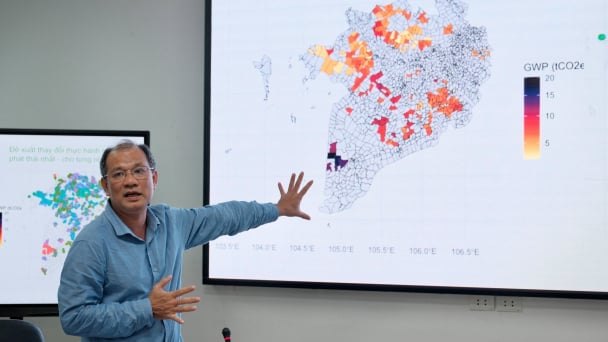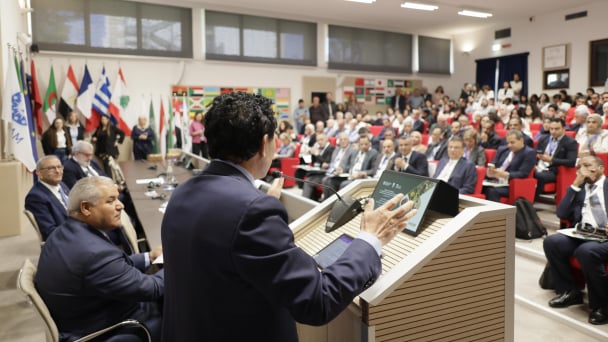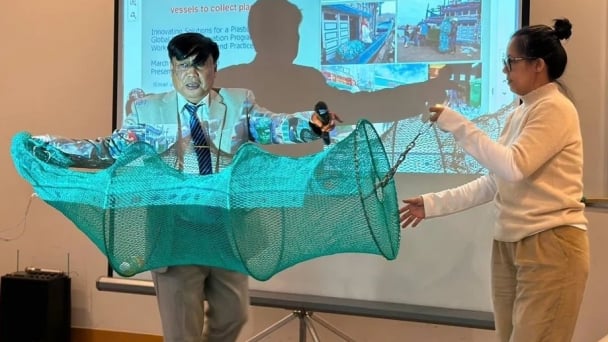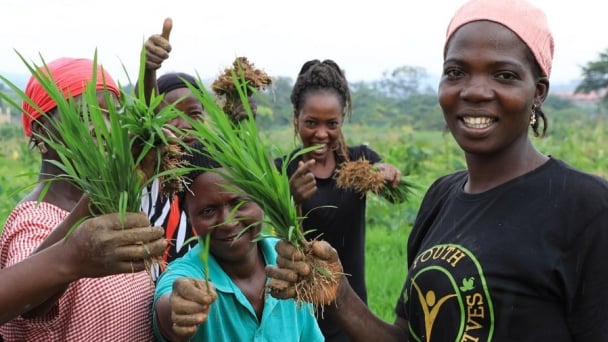May 14, 2025 | 19:00 GMT +7
May 14, 2025 | 19:00 GMT +7
Hotline: 0913.378.918
May 14, 2025 | 19:00 GMT +7
Hotline: 0913.378.918

H.E. Mrs. Zulaykho Makhkamova, Chairwoman of the Committee for Family and Women of the Republic of Uzbekistan, examining Nha Xa silk products. Photo: Phuong Linh.
"I would like to encourage Vietnamese businesses to consider establishing silk production factories within Uzbekistan. Vietnam is currently one of the largest importer of silk cocoons from Uzbekistan. As a result, the establishment of local factories will help reduce import and export costs," emphasized H.E. Mrs. Zulaykho Makhkamova, Chairwoman of the Committee for Family and Women of the Republic of Uzbekistan.
During her visit to the Nha Xa silk weaving village in Duy Tien, Ha Nam on January 23, H.E. Mrs. Makhkamova and her delegation, which includes the representatives of several Uzbekistani companies, expressed deep admiration for the craftsmanship of local silk artisans.
According to H.E. Mrs. Makhkamova, Nha Xa silk products such as scarves, clothing, and blankets are highly favored by the people of Uzbekistan. According to the current value chain, the artisans of Nha Xa village process silk cocoon imported from Uzbekistan into silk products for various markets around the world, including Uzbekistan.
"Uzbekistani businesses are eager to import Vietnamese silk technology. I would like to encourage Vietnamese businesses to support this notion. A 700-year-old silk weaving village possesses immense cooperative potentials, which we need to explore," Mrs. Makhkamova stated.
During the introduction of Nha Xa weaving village to Uzbekistan, Ha Nam province's Department of Agriculture and Rural Development reported that the village was founded between the end of the 13th century and the beginning of the 14th century. Local villagers attributed General Tran Khanh Du as the founding ancestor of the craft.
The silk weaving process in Nha Xa village has been gradually improved over the years with machinery replacing manual labor. However, local artisans preserve the art of smooth silk weaving and flower silk weaving through basic traditional steps such as spinning silk, attaching cocoons, connecting cocoons, weaving, degumming, dyeing, steaming, cooling, drying silk, etc. Nha Xa village recently shifted its focus towards silk products tailored for tourists, such as Ao Dai, scarves, neckties, strawberry silk scarves, embroidered silk bedspreads and pillows with floral patterns, embroidered silk bedspreads and pillows with glossy patterns, as well as silk bags, wallets, and backpacks. The village's wide range of products aims to serve the diverse needs of foreign customers.
The total global raw silk yield is estimated at over 162 thousand tons, with an average annual growth rate of 15.7%. China currently ranks first in terms of silk production, accounting for over 80% of the global silk yield; followed by India, Uzbekistan at 1.3%, and Vietnam.

The Uzbekistan delegation expressed deep admiration for the craftsmanship of the artisans in the Nha Xa silk weaving village. Photo: Phuong Linh.
During a meeting with Mr. Phung Duc Tien, Deputy Minister of Agriculture and Rural Development of Vietnam, Mr. Rustam Kholmatov, Chairman of the Council of the Republic Trade Union of Workers of the Agricultural Industrial Complex of Uzbekistan, expressed his wish to study from the experiences of Vietnamese research centers in the silk industry.
In response to Uzbekistan's proposal for cooperation, the Ministry of Agriculture and Rural Development will assign key governmental agencies, which include the Department of Livestock Production and the Department of the Animal Health, to conduct further research and establish a cooperation agreement in the near future.
During their visit to the Nha Xa silk weaving village, the Uzbekistan delegation was received by Hai Nam Commercial Company Limited, one of the largest silk companies in the province. According to Mr. Nguyen Van Hai, the company's director, the company imports a considerable amount of silk cocoons from Uzbekistan annually.
"The proposal from Uzbekistan is very promising. However, we need assurance and support from the Uzbekistani government to proceed with the establishment of a factory. Consequently, the factory will significantly improve raw material procurement and product consumption," Mr. Hai emphasized.
According to the Department of Livestock Production, there are currently 32 provinces across the country engaged in sericulture, with the involvement of approximately 38,000 households and over 100,000 farmers. Additionally, Vietnam's silk industry currently accounts for 2% to the country's total export value.
Three types of mulberry varieties are currently utilized in local production, including: local varieties, new hybrid Vietnamese varieties, and Chinese varieties. The new hybrid Vietnamese varieties yield between 35 and 40 tons of leaves per hectare.
Yellow cocoons are priced between 110,000 and 120,000 Vietnamese dong per kilogram; whereas white cocoons are priced between 170,000 and 205,000 Vietnamese dong per kilogram (these prices vary depending on the region and season).
There are two main types of silkworms: mulberry silkworms and castor silkworms. Mulberry silkworms are mainly used nationwide, including multibreed yellow cocoon varieties and dual-breed white cocoon varieties. Notably, multibreed silkworms produce silk with lower quality compared to that of dual-breed silkworms. However, multibreed silkworms are easier to farm compared to their counterpart. On the other hand, castor silkworms are farmed in select midland and mountainous regions.
Translated by Nguyen Hai Long

(VAN) Data from 10,000 farming households will help professionalize production organization and support the implementation of the One Million Hectares Program for High-Quality, Low-Emission Rice Cultivation.

(VAN) FAO Director-General QU Dongyu marks International Day of Plant Health at NENA conference.

(VAN) Deputy Minister of Agriculture and Environment Hoang Trung affirmed that floriculture and ornamental plants are a growing industry that receives significant global attention.

(VAN) The three staple crops dominating modern diets – corn, rice and wheat – are familiar to Americans. However, fourth place is held by a dark horse: cassava.
/2025/05/10/4037-3-223011_495.jpg)
(VAN) Remote sensing technology is becoming an indispensable tool in monitoring resources, developing modern agriculture, and protecting the environment in Vietnam.

(VAN) The trash bag used on fishing vessels can withstand rough sea conditions, including level 8 to level 10 winds and waves. Notably, it can be hung anywhere on the boat.

(VAN) African leaders launched the Kampala Declaration on Building Resilient and Sustainable Agrifood Systems in Africa, marking a bold step toward transforming the continent's agriculture.